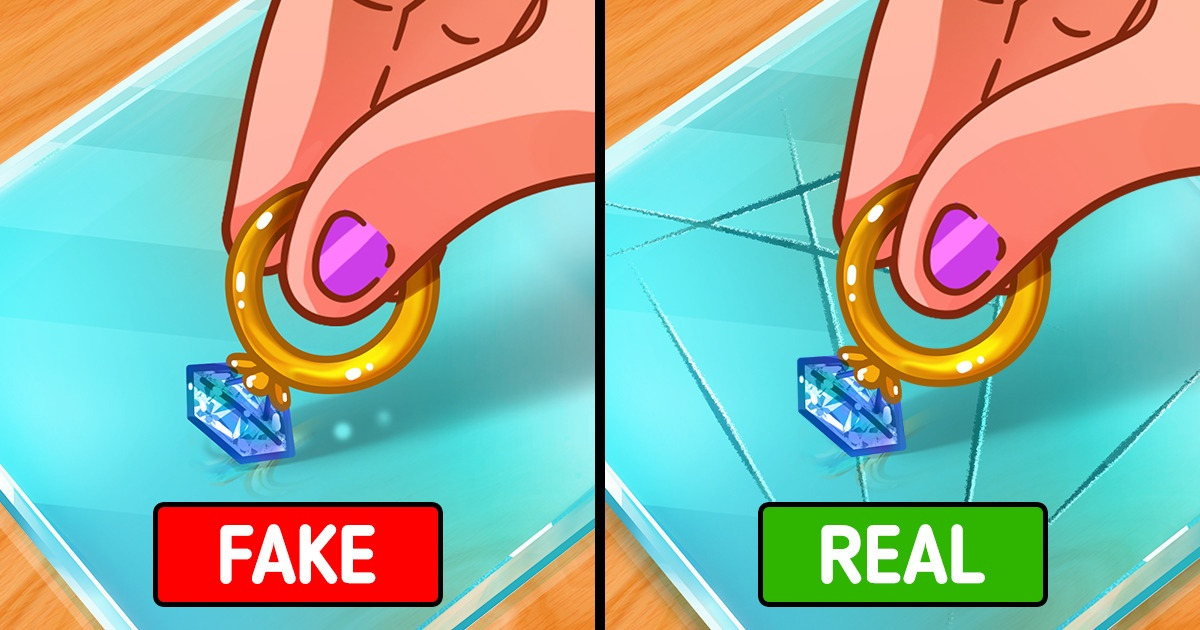
How to Tell If a Crystal Is Real
Crystals or gemstones are colorful natural formations taken from the earth. Due to their unique traits, some people use them to make pieces of jewelry, while others keep them to simply admire their beauty. In either case, it’s possible to find offers that involve fake crystals made out of everyday materials, such as plastic or glass.
5-Minute Crafts has compiled different aspects that will help you determine if you are holding a genuine crystal or an imitation piece.
1. Get familiar with crystals’ names.
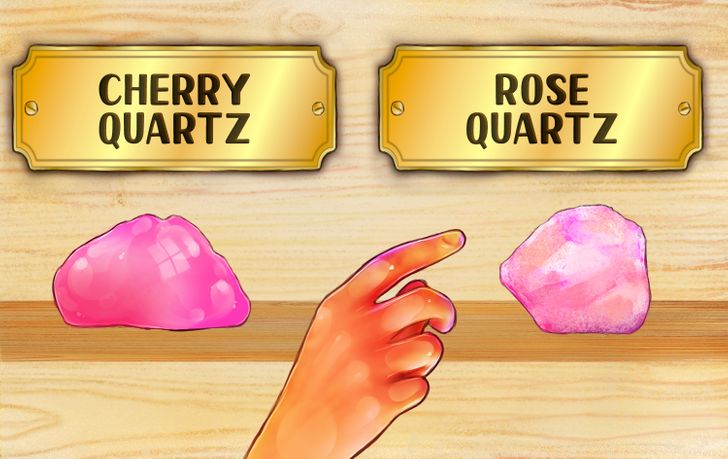
When crystals’ names seem strange or deviate from their proper names, such as “cherry quartz” instead of rose quartz, or “moonlight amethyst” instead of amethyst; they are more likely to be made from glass or dyed quartz.
So, to make sure you are purchasing an authentic and unaltered crystal, get familiar with essential gemstones’ names. When shopping, stick to them instead of opting for those that appear too creative or off the chart.
2. Pay attention to saturated colors.
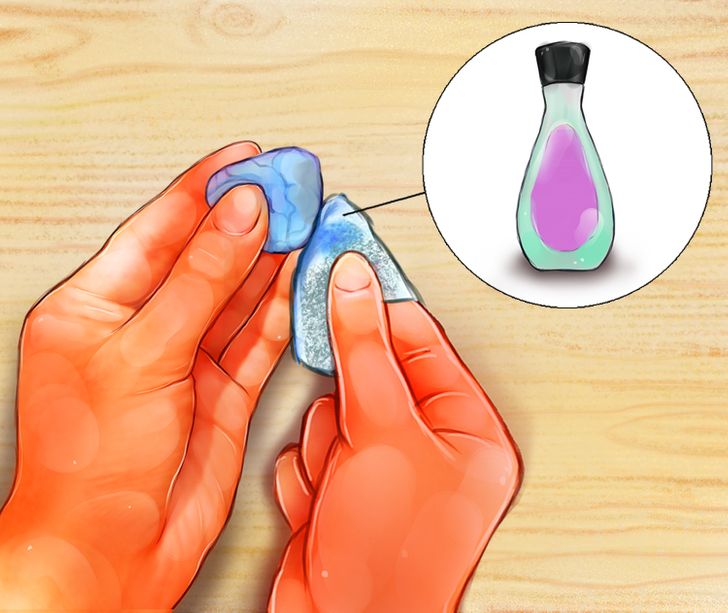
Gemstones and crystals are characterized by their beautiful, diverse colors. However, a saturated shade could be an unmistakable sign that your crystal has been dyed or that you got a different stone than the one you thought.
Some crystals can be dyed or heated to be sold as a different one, which means that you are not getting the piece you wanted in the first place. Yes, natural gems with saturated colors, like carnelian and tourmaline, exist but keep in mind that natural stones have softer shades and are not as blinding as modified ones.
A way to find out if you have an undyed crystal is to leave it outside in the sun or rain. You can also try rubbing a damp cloth or a cotton bud with nail polish remover against it. If the color fades away, it’s a fake or altered gem.
3. Skip crystals with symmetrical patterns.
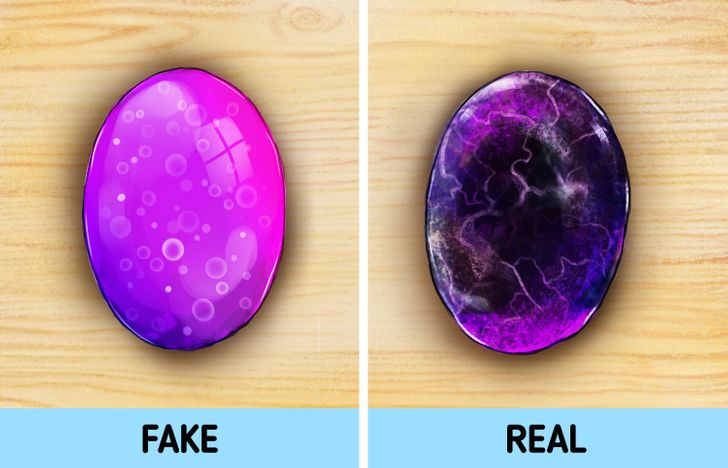
Perfectly symmetrical patterns are very rare in crystals plucked from nature. So if you are looking for a gem with these characteristics, you may end up buying a handmade one. Remember that crystals are unique and one of a kind, so they all have their own random shapes and flaws.
In this aspect, another thing to look out for is air bubbles. Crystals hold imperfections, but they will not look like air bubbles trapped inside, like the ones found in glass marbles. If you have doubts but can’t see your gemstone clearly, use a magnifying glass to examine it and easily spot these traits.
4. Compare their weight.
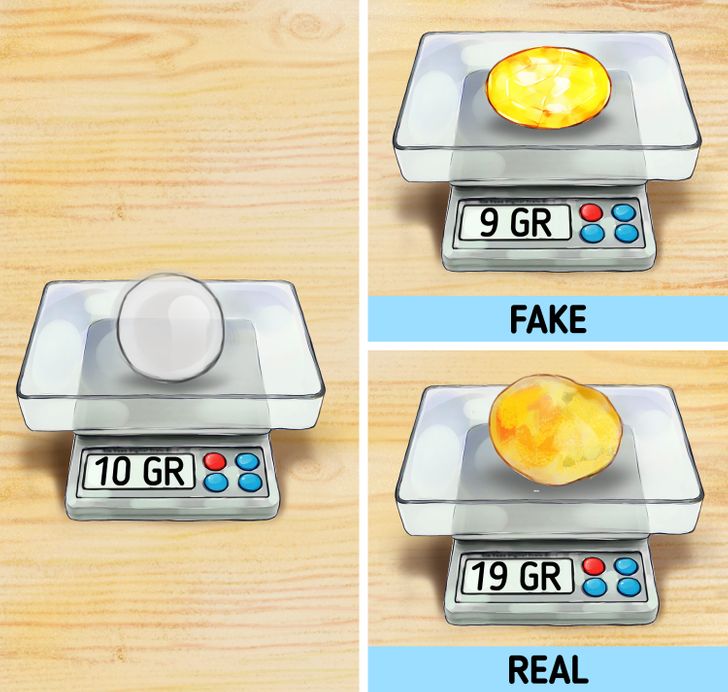
Since natural gemstones have more lead than synthetic ones, they are heavier than the latter. If you think you may have purchased a glass crystal instead of a real gem, the easiest way to find out is to compare its weight next to a glass piece of equal size.
If the crystal you are holding in your hands is lighter or the same weight as the glass piece, it is likely that it is fake. For a more accurate examination, use a scale to know the precise weight.
5. Test the hardness.
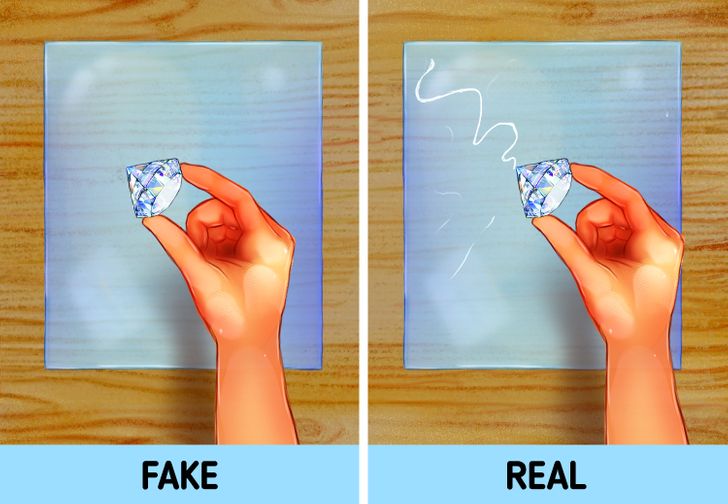
Genuine gemstones are quite less fragile than handmade ones. Therefore, you can use them to scratch any other surfaces that are not as hard. If you want to test the hardness yourself, follow these steps:
- Search for your crystal on the Mohs scale of mineral hardness here.
- Carefully scratch it with a mineral with a number that’s lower on the scale. If it gets damaged, it is a fake crystal. If it doesn’t, it’s a real one.
Keep in mind that you can scratch all minerals on the Mohs scale by themselves or with any other crystals above them, so make sure you’re not testing yours on a softer natural gem.
If your crystal has pointy edges, you can also test its hardness against glass or plastic. Generally, true gems will leave a visible mark on these surfaces.
6. Avoid unrealistic prices.
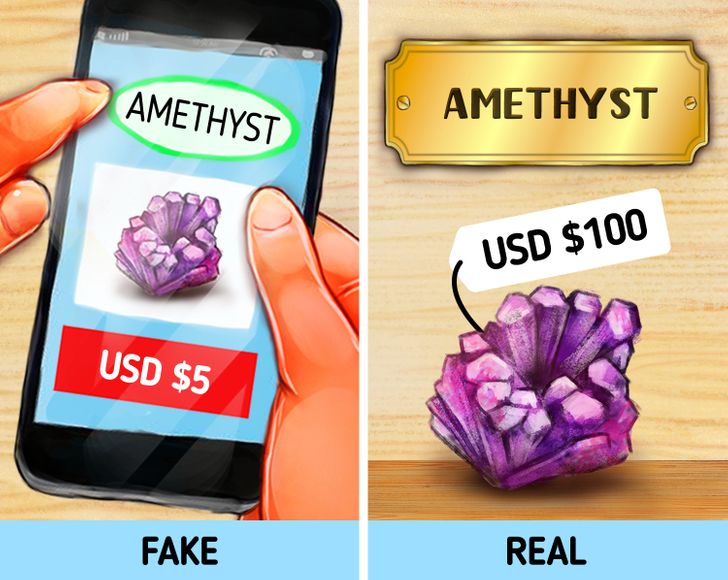
It’s essential to consider that the production chain of natural crystals can take a lot of time and resources, as they have to be found, mined, processed, and shipped. Therefore, their price will be much higher than synthetic or handmade pieces.
For example, buying a natural amethyst cluster from a crystal hunter could cost half less than the same one at a retailer. However, the fake version could cost even 20 times less on a mega shopping website. So, if you have found a deal too good to be true, it probably involves an imitation piece.